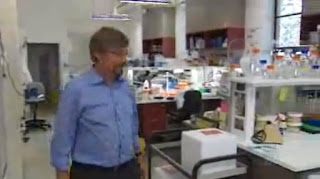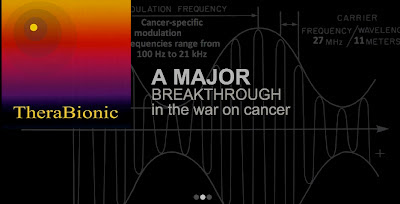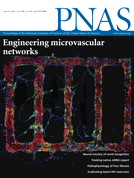The Week: FDA’s Secret Spying Was a Vast Operation
Live Longer and Feel Happier
Remote Scanning Technology
Occassionally, one of these technologies leaks out into public awareness. The one below was funded by the CIA and is definitely not pseudoscience. Our so-called experts on “pseudoscience” will be scanned at the airport at the molecular level like anyone else by a remote device.
New Homeland Security Laser Scanner Reads People At Molecular Level
July 11, 2012 11:01 AM, CBS

TA-65: The First Second Bridge Technology Available
During my recent visit to Dr. Grossman’s Wellness Center, I asked him what was the most significant advance in antiaging medicine since my last visit six years ago. He said TA-65. Flipping the switch to turn on the genes that extend telomere length is the first “Bridge 2” technology to become available. See Dr. Grossman’s book, “Fantastic Voyage: Live Long Enough to Live Forever.”
Nature News 28 Nov 2010
Telomerase reverses ageing process
 Protecting chromosome tips doesn’t just prevent ageing. It can reverse it.Peter Lansdorp/Visuals Unlimited/Corbis
Protecting chromosome tips doesn’t just prevent ageing. It can reverse it.Peter Lansdorp/Visuals Unlimited/CorbisProstate Health Version 1.0
Are Genetically Engineered Mosquitoes the Answer to Quell Dengue Fever?
Australian research scientists have developed a strategy for fighting Dengue fever, a viral disease spread by mosquitoes that affects more than 50 million people annually and causes fever and crippling joint and muscle pain—and in some cases even death.Dengue kills FAR more people worldwide than influenza, yet it is rarely even mentioned by Western media.A bacterium named Wolbachiapipientis naturally infects many insect species and has the ability to interfere with its host’s reproductive ability in such a way that entire populations become infected within just a few generationsi. When Wolbachia infects mosquitoes, the mosquitoes’ ability to transmit Dengue virus is almost completely blocked.Researchers are encouraged that these bacterially infected mosquitoes are safe to humans and, once set loose, are capable of spreading on their own and overtaking the wild mosquito populations that transmit disease to humans.In two northern Australian towns, between 10,000 and 20,000 of these infected mozzies were released (“mozzie” is Australian for mosquito), and wild mosquito infection rates neared 100 percent—meaning, mosquitoes that can infect humans were almost completely replaced by the ones that can’t.This approach is a change from the swarms of genetically engineered mosquitoes being bred by companies like Oxitec, a British biotechnology company that has released millions of mutant mosquitoes into the fields of unsuspecting Australians.Oxitec has found a way to genetically manipulate Aedes aegypti, the mosquito species mainly responsible for transmitting Dengue and yellow fever viruses to humans. These “frankenskeeters” represent a new and terrifying twist in potential GMO (genetically modified organisms) dangers—another product of modern science outpacing common sense when big money is thrown into the equation.
Cancer Treatment with Electromagnetic Fields Moving Into Mainstream Medicine
Published online 17 January 2012
Phase II and III Clinical Trials Approved by FDA for Cancer Treatment with Electromagnetic Frequencies
Treating cancer with amplitude-modulated electromagnetic fields: a potential paradigm shift,
again?
British Journal of Cancer 2012, 106:241-241
http://www.nature.com/bjc/journal/v106/n2/full/bjc2011576a.html
R.M., Kuster, N., Costa, F.P., Barbault, A., Pasche, B.
Cancer cell proliferation is inhibited by specific modulation frequencies
British Journal of Cancer 2012, 106:307 – 313
http://www.nature.com/bjc/journal/v106/n2/full/bjc2011523a.html
Chammas, M.C., de Souza Rocha, M., Morgan, D., Cantor, A., Ivan Brezovich, Niels Kuster,
Barbault, A., Pasche, B.
Treatment of advanced hepatocellular carcinoma with very low levels of amplitude-modulated
electromagnetic fields
British Journal of Cancer 2011, 105: 640-648
PMID 21829195
http://www.nature.com/bjc/journal/v105/n5/full/bjc2011292a.html
Carcinogenesis: Treatment Depends on Understanding the Multistage Model
Responding to reader requests, I recently published a summary paper on my work on carcinogenesis on this site. The paper was based in part, on my Ph.D. thesis which was published (in short form) as:
The multihit model of carcinogenesis: etiologic implications for colon cancer.
Sutherland JV, Bailar JC 3rd.
J Chronic Dis. 1984;37(6):465-80.
Noting that this paper is the basis of current understanding of cancer induction, I mentioned that recent sequencing of the genome has simply given more weight to the basic hypotheses. A recently published paper replicates my previous work. In fact the coauthor was a reviewer of my earlier paper. The National Academy of Sciences provides access to full text of the article.
Multistage carcinogenesis and the incidence of colorectal cancer
E. Georg Luebeck* and Suresh H. Moolgavkar
Proceedings of the National Academy of Sciences 99:23:15095-15100, November 12, 2002
We use general multistage models to fit the age-specific incidence of colorectal cancers in the Surveillance, Epidemiology, and End Results registry, which covers 10% of the U.S. population, while simultaneously adjusting for birth cohort and calendar year effects. The incidence of colorectal cancers in the Surveillance, Epidemiology, and End Results registry is most consistent with a model positing two rare events followed by a high-frequency event in the conversion of a normal stem cell into an initiated cell that expands clonally to give rise to an adenomatous polyp. Only one more rare event appears to be necessary for malignant transformation. The two rare events involved in initiation are interpreted to represent the homozygous loss of adenomatous polyposis coli gene function. The subsequent transition of a preinitiated stem cell into an initiated cell capable of clonal expansion via symmetric division is predicted to occur with a frequency too high for a mutational event but may reflect a positional effect in colonic crypts. Our results suggest it is not necessary to invoke genomic instability to explain colorectal cancer incidence rates in human populations. Temporal trends in the incidence of colon cancer appear to be dominated by calendar year effects. The model also predicts that interventions, such as administration of nonsteroidal anti-inflammatory drugs, designed to decrease the growth rate of adenomatous polyps, are very efficient at lowering colon cancer risk substantially, even when begun later in life. By contrast, interventions that decrease the rate of mutations at the adenomatous polyposis coli locus are much less effective in reducing the risk of colon cancer.








